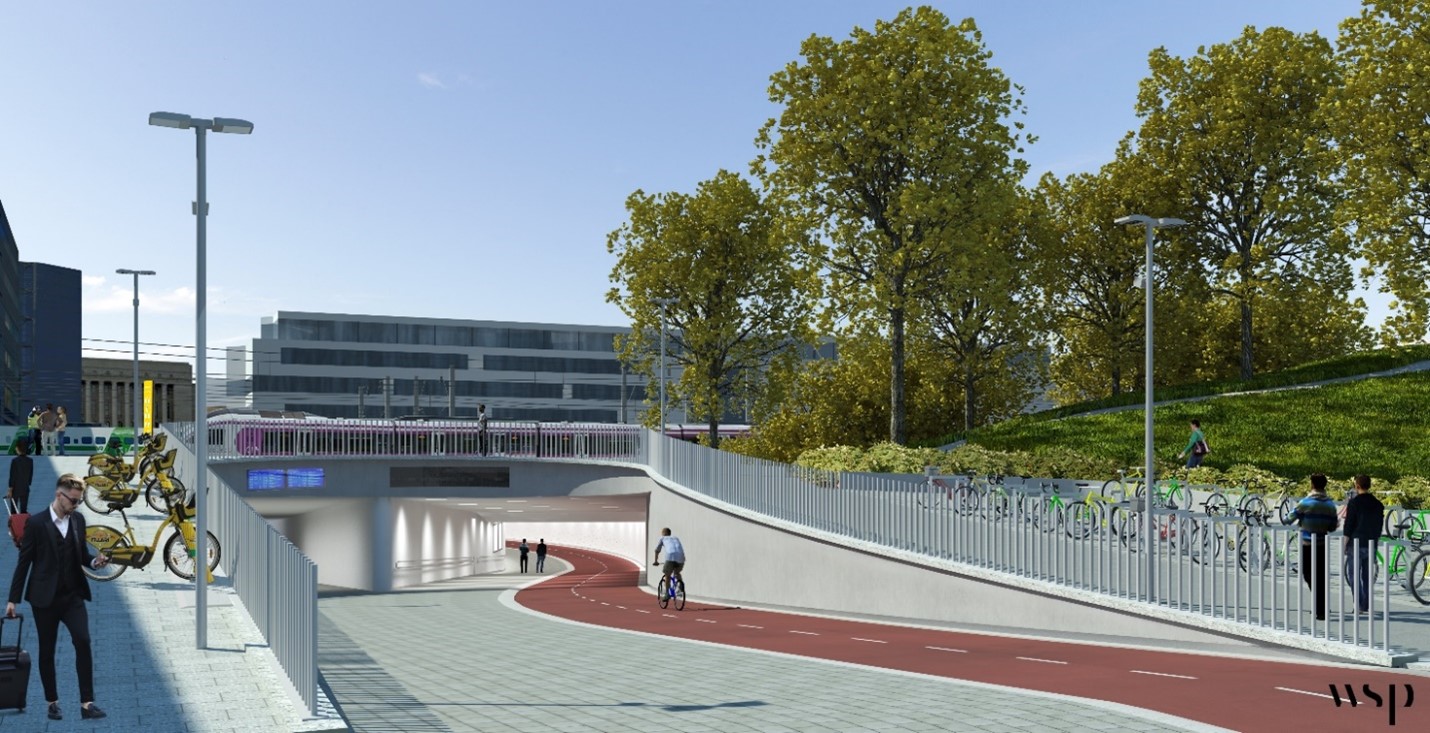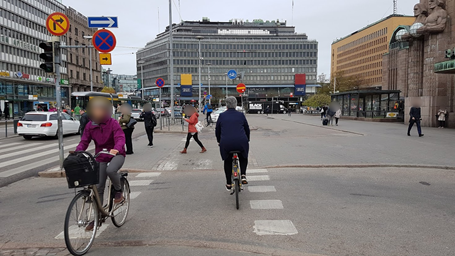
#VisionaryCities Series – Helsinki Commits to More Cycling With Development of New Kaisa Bicycle Tunnel
 The #VisionaryCities Series is a collection of best practices and success stories from visionary local authority leaders contributing to making cycling in Europe better, safer and more common.
The #VisionaryCities Series is a collection of best practices and success stories from visionary local authority leaders contributing to making cycling in Europe better, safer and more common.
This episode of the series was written by Oskari Kaupinmäki, Cycling Officer in the City of Helsinki.
Helsinki is investing in progressive cycling infrastructure to reach its goal of becoming ‘the most functional city in the world’. The development of the €23 million ‘Kaisa’ bicycle tunnel beneath the city’s Central Station marks a significant commitment towards achieving a desired balance across all transport modes. This commitment is in line with Helsinki’s goal of becoming carbon neutral by 2035, a target which has been integrated into the city’s Bicycle Action Plan 2020-2025.

Construction has already begun on the Kaisa tunnel and is set to be completed by 2023. Once complete, the tunnel shall provide a crucial link between the east and west sides of the ‘Baana’ bicycle superhighway network, accommodating estimated daily cycling volumes between 6,000 and 10,000 people.
What is the Baana network plan?
The Baana network plan consists of a 130 km comprehensive network designed to connect all suburban areas of Helsinki to the urban core and with each other. Currently cyclists travelling east to west past the railway station must take a detour approximately half a kilometer in length along the Kaivokatu cycle path, which is deemed subpar according to the city’s current design principles, which are based on Dutch and Danish best practice principles. The Kaisa tunnel is estimated to shorten travel time by at least two minutes for cyclists, though most likely more.
Though railways provide a sustainable means of long-distance transport, they often create a barrier for local mobility. Therefore, a sufficient number of safe and comfortable tunnels – or bridges – across rail lines is necessary to ensure the cohesion of cycling networks. Strategically located tunnels, such as the Kaisa tunnel, promote sustainable transport by offering bicycles a shorter route than cars. When located at stations, such tunnels can also provide convenient access to platforms, a necessary element of a seamless multimodal travel.
– Aleksander Buczyński, ECF Policy Officer
What are the tunnel’s specifications?

The tunnel itself will be 220 metres in length with a 4-metre-wide bicycle path that will run alongside a 3.5-metre-wide pedestrian sidewalk. The project shall also include a park and ride facility for 1,500 bicycles, which will effectively encourage multimodal transport connectivity. The Kaisa tunnel will also have access to an already-existing pedestrian tunnel, where half of the platforms are directly accessible from belowground. The rest of the platforms are accessible above ground.
There are currently around 4,000 cyclists circumnavigating the railway station on the existing bicycle path along Kaivokatu (see picture above). The Kaisa tunnel is estimated to accommodate up to 10,000 cyclists a day. By taking remaining cycling volumes on Kaivokatu into consideration, the tunnel is expected to generate up to 2,900 new bicycle trips along the east to west route.
Additionally, it is estimated in a calculation made for the Finnish Transport and Communications Agency, Traficom, that carbon emissions will be reduced by 440 tons a year once cycling volumes rise to the forecasted levels and the modal share of car traffic goes down.
Improving Helsinki’s cycling modal share

Currently the share of all trips made by bicycle in Helsinki amounts to approximately 9%. Helsinki’s long-term goal, according to the aforementioned Bicycle Action Plan, is to double the modal share to 20% by 2035 while making the city into a year round cycling city fit for people of all ages and abilities. The Action Plan was approved by the City Board on November 2nd of 2020.
Future plans along the route include improving current bicycle infrastructure on both sides of the tunnel, especially on the east side. Concrete plans are yet to be made, but the city’s design standards are calling for bicycle highway quality, which means a target bicycle path width of 4 metres or bicycle streets, for example.
The Kaisa Tunnel is a major leap forward in making the Helsinki a European cycling capital but represents only a fraction of what is to come. However, it is sufficient to say that upon completing the 130 km Baana network, the Kaisa Tunnel could very well become Helsinki’s own version of the Copenhagen’s world-renowned bicycle bridge, the Cykelslangen!
A note from the European Cyclists' Federation: As a member of our Cities & Regions for Cycling network, ECF is immensely proud of the commitment Helsinki has shown towards increasing cycling in their city. In the frame of the current revision of the Trans-European Transport Network (TEN-T) guidelines, ECF advocates for analysing potential cycling traffic and integrating necessary elements of cycling infrastructure in all rail projects. Wherever such tunnels or bridges are missing on the already modernised sections of the TEN-T network, they should be available for EU funding as standalone projects. Considering Helsinki’s Central Station is part of the TEN-T, ECF recognises the Kaisa bicycle tunnel as leading example of ideal multimodal transport investment and a landmark commitment towards increasing cycling in European cities. For more info on CRC click here.
News category:
Network/Project Involved:
Contact the author
Recent news!
Upcoming events
Contact Us
Avenue des Arts, 7-8
Postal address: Rue de la Charité, 22
1210 Brussels, Belgium









